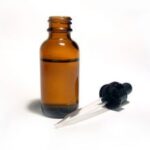How to properly use an anchor is a mystery to the majority of boat owners. If you’re an inexperienced boater, you may think the answer is very simple. You probably believe all you have to do is throw the anchor into the water, then tie it off after it hits the bottom. If this is what you think, keep reading.
If you’re an experienced boater, you know why the above statement is flawed. When it comes to boating it’s always important to use the proper equipment. Using an anchor requires the correct equipment, thoughtful consideration, and the proper amount of practice.
You can’t properly anchor if you don’t have the appropriate ground tackle. In boating, ground tackle is defined as the anchor, line, chain, shackles, and swivels. What type of ground tackle you need, will depend on your boat, and what kind of boating you do. When it comes to anchors, there isn’t any one anchor that is a magic bullet. In other words, a single anchor will not be able to do everything completely and flawlessly. Every type anchor has its own positives and its negatives.
The Danforth anchor
One of the most popular anchors, and easiest to recognize, is the Danforth anchor. It has two long, sharp pivoting flukes and a long shank. A Danforth anchor is good for boats which are small to medium in size. A nice feature of the Danforth anchor is its light weight and not difficult to stow aboard the boat. Where the Danforth anchor really shines is its ability to dig into sand and mud. You don’t have to pull your back out when you want it to release. It will come out fairly easily when pulled from different directions.
The Danforth can be pulled at a more vertical angle. This is because the Danforth anchor boasts pivoting flukes. The Danforth anchor does well when you are on the water to fish. Generally, when you’re fishing you need an anchor which will allow you to easily release the anchor from the mud or sand. If you tend to use your boat for overnight trips or move your boat through different areas you will probably want to get a different type of anchor.
The Plow anchor
The next anchor can be referred to as the CQR, but is better knows as the Plow anchor. The shank pivots at the end and is distinguished by a single shaped fluke. The way the Plow anchor is designed allows it to be useful on various water bottom types. The Plow anchor works well because of the way the plow shank moves. The plow shank pivots from side to side. However, the shank remains parallel to the fluke. Again, the plow anchor is very easy to release from the bottom when pulled vertically.
The Bruce anchor
This anchor gets its origin from a heavy duty application. It was originally designed and used for offshore gas and drilling rigs. Of course, the version made for boats is much more stripped down. However, that doesn’t make this type of anchor any less popular with boat owners. As you can imagine, originally being used for oil rigs, this anchor holds to the bottom very well. All it takes is some vertical pulling to get it to become detached from the bottom
When choosing an anchor system, it is essential that the anchor system properly matches the length of the boat you have, the displacement, and the windage. You really shouldn’t skimp when it comes to anchor line. For maximum flexibility and sturdiness you should choose braided nylon anchor line.
The anchor line must also be appropriate for the size and length of your boat. If you have a small or medium boat, you should take extra measures. If you have a small or medium boat you should purchase some galvanized steel chain. You would then tie the chain between the line and the anchor, just for extra durability.
When it comes to proper anchoring, it is best to learn from an experienced boat owner. If you are new to boating, and don’t know any experienced boat owners; you can contact your local coast guard for boating classes. They more than likely can tell you where to go to get proper anchoring education. Anchoring, just like other boating skills, has to be practiced to be perfected.


